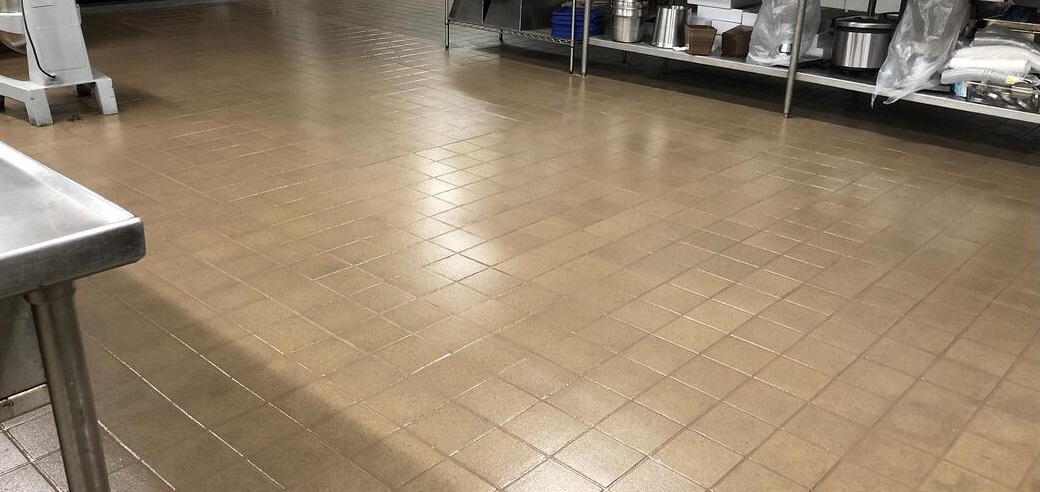
Kitchens and restrooms in commercial facilities are among the most difficult spaces to clean and maintain. They are frequently subjected to high foot traffic with little downtime for cleaning, as well as a variety of potential pollutants, whether that’s food waste or human waste.
In addition, these are spaces where people wash their hands and eat their food so proper maintenance is a critical part of maintaining safety and avoiding potential liability issues.
Cross-contamination on kitchen and restroom surfaces can be extremely dangerous but there are ways to prevent potentially deadly issues that can occur when maintaining your commercial facilities.
Dangers on Kitchen Surfaces
According to the U.S. Centers for Disease Control and Prevention, an estimated 9.4 million domestically acquired foodborne illnesses occur each year in the United States due to pathogens and unspecified agents transmitted through food. Therefore, deep cleaning and sanitizing is an essential part of kitchen maintenance. It’s not always as straight forward as it sounds, though.
Kitchen surfaces come with a variety of demands. They must be strong enough to withstand high temperatures and heavy equipment, durable enough to withstand fats, oils and constant cleaning, and safe enough to prevent slips, trips and falls.
This often means floors cannot be finished or glazed because it would present a slipping hazard. Because of this, specific cleaning methods must be determined by the surface’s material. For tiled surfaces like quarry, sealing and coating grout lines is a common approach used to repel moisture, inhibit bacterial growth and ease cleanup.
Preventing Cross-Contamination
A rigorous maintenance schedule and periodic professional deep cleaning isn’t enough to ward off one sinister danger – cross-contamination. Most commercial kitchens have restrooms close by, both for the staff and customers. Those restrooms are frequently maintained by the same people operating the kitchen, and if they aren’t, they often use the same tools and equipment for restroom maintenance. This is how cross-contamination occurs.
“Cross-contamination is the act of transporting germs and bacteria from one place in a facility to another, and can be done unintentionally during cleaning,” states a Cleaning & Maintenance Management article. “For instance, a custodian could wipe down a toilet that was exposed to norovirus and then use the same cleaning tool to wipe down the sinks, spreading the virus. Or a custodian could clean a kitchen sink contaminated with raw chicken debris containing the salmonella virus and then use the same cloth to wipe the kitchen counter.”
If the same cleaning tools, such as mops, scrub brushes, squeegees and wet vacs, are being used in restrooms as well as kitchen areas, it’s a sure bet cross-contamination is occurring. Cleaning & Maintenance Management recommends a few ways to prevent this from happening.
Categorize Tools, Equipment and Cleaning Supplies
Use a label system to identify which supplies are for the kitchen and which are for restrooms. This can be further improved by adding a color-coded system designating which tools are used for high-risk surfaces like toilets, moderate-risk like sinks and doorknobs, and low-risk areas like offices and hallways.
Proper Storage
Cleaning tools and supplies for kitchens and restrooms need their own storage areas. Keeping all the cleaning equipment in the same closet does nothing to prevent cross-contamination.
Invest in Safety
Traditional mops act as sponges for bacteria and contaminants and then spread them to other areas. There are new materials available, such as microfiber, that are much more effective at reducing bacteria than traditional mops. Wet/dry vac systems, while pricier, are also effective and efficient.
Start at the Top
Even though we may not see them, germs and contaminants are dispersed during the cleaning process. It takes some time for particulates to settle. Because of this, it makes sense to clean higher areas first, working down, with the floor completed last.
Designated Cleaners
It may not always be possible, but when it is, it’s a great idea to restrict the staff cleaning restrooms from areas like dining and kitchen spaces. Even when gloves and shoe booties are worn and carefully discarded, bacteria can easily travel on someone’s hair or skin. Best practices like these can save lives, especially in this pandemic age.

